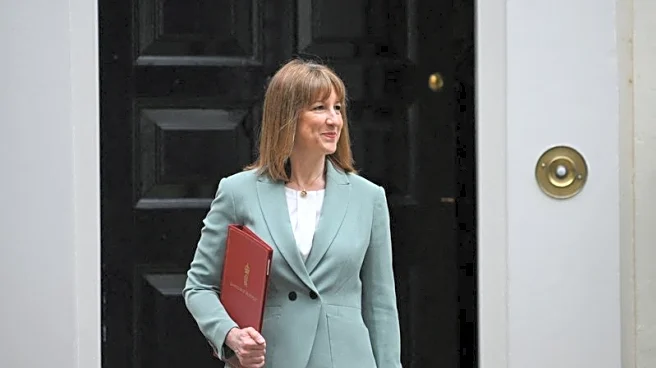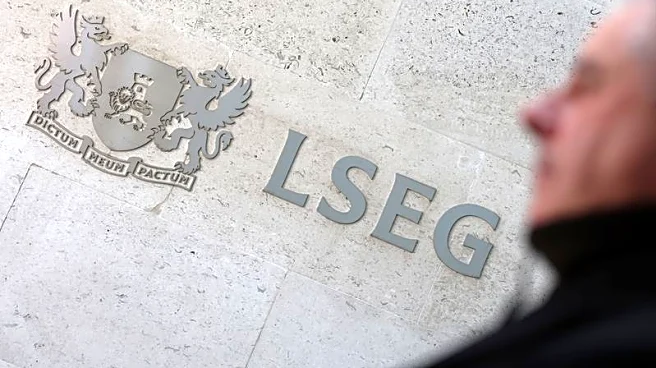What's Happening?
The United Kingdom's long-term borrowing costs have reached a 27-year high due to a global sell-off of government bonds. The yield on 30-year UK gilts has increased to 5.747%, surpassing the previous high of 5.723%. This rise in borrowing costs is putting pressure on Chancellor Rachel Reeves ahead of the autumn budget, as the government may need to consider spending cuts or tax increases to adhere to fiscal rules set by the Office for Budget Responsibility. The situation is exacerbated by concerns over the UK's debt burden trajectory, with fears of a 'debt trap' where the interest rate on debt exceeds the nominal growth rate of the economy.
Why It's Important?
The increase in borrowing costs is significant as it could impact the UK's fiscal policy and economic stability. Higher interest rates on government debt may lead to increased financial strain, potentially necessitating austerity measures. This situation could affect public services and economic growth, with broader implications for the UK's position in the global economy. The government's ability to manage its debt effectively is crucial to maintaining investor confidence and avoiding further financial market disruptions.
What's Next?
Chancellor Reeves may face difficult decisions in the upcoming autumn budget, balancing fiscal responsibility with economic growth. The government will need to carefully navigate these challenges to prevent further increases in borrowing costs. Potential measures could include spending cuts or tax hikes, which may have political and social repercussions. The situation will be closely monitored by investors and economic analysts, as any changes in fiscal policy could influence market dynamics.












